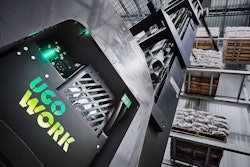
With the beginning of any new year, it is natural to wonder if the problems of the previous year will get better. This is why many businesses, consumers, and media commentators have been asking, “Will supply chain issues improve in 2022?” Recently, some articles have discussed a new report from the Federal Reserve Bank of New York as a sign that the supply chain problems may get better soon. But many people are still seeing shortages in stores and want to know when they will get better. However, the answer is not simple or predictable so it is important to set realistic expectations. There are reasons for hope, but the shape of 2022 will depend on the actions of companies.
Clarifying the federal reserve bank report
We should first clarify the meaning of the New York Federal Reserve Bank’s report. Even though other articles have interpreted it as indicating that things may get better soon, the report does not actually state this. Instead, the New York Fed was announcing a new index, the Global Supply Chain Pressure Index (GSCPI), which combines the data from numerous other metrics tracking various supply chain issues such as cross-border transportation costs, container shipping rates, and air freight rates. The authors’ conclusion is that global supply chain pressures are still very high but that they may have peaked. Since what goes up eventually comes down, it is reasonable to see this as a sign of hope. But things can stay in a peak state for a long time. How soon the pressures come down will depend on two things: how the pandemic evolves and how widely companies execute practices that we know will make supply chains more resilient.
Applying the pandemic’s many lessons
At the beginning of the pandemic, nobody predicted that it would last this long. After two years, the virus continues to surprise us and supply chain experts are still learning lessons. Anytime companies started to feel that things were under control, new variants would cause more disruptions and consumer behaviors would shift again. This showed that short-term solutions are not enough. It is possible that Omicron may be the last variant of concern, but we should not assume this. And even if it is, there are many other disruptions that can occur: natural disasters, cybersecurity threats, possible military conflict, and other pandemics. This is why supply chain experts have expressed the importance of building long-term resilience. Unfortunately, economic pressure can make companies forget the lessons of the pandemic.
The need for diversification and nearshoring
While writing about the semiconductor chip shortage, I suggested nearshoring as one of the long-term solutions for diversifying supply chains. Nearshoring brings facilities and production lines closer to consumption points so that transit times are shorter and there is faster speed to market. It is true that there are costs and challenges to nearshoring in the short-term, but the potential long-term costs of ignoring it are bigger. Companies that have already transitioned to nearshoring include Boeing, which decided to build a plant in Mexico, and Ford, which moved its car production to Mexico as well. It’s not just auto and aerospace companies. Some of the major retailers also understand that nearshoring is the wave of the future. For example, Walmart will spend $350 billion to nearshore products in six categories: textiles, plastics, small electrical appliances, food processing, pharmaceuticals, and “goods not for resale.” Changes like these would help ensure that we see more supply chain improvements soon.
However, although many large companies have been considering nearshoring or are in the process of nearshoring, smaller or medium-sized companies should also consider doing so if possible. Small companies have been hit the hardest by the supply chain problems and many are still experiencing major disruptions. Even if it is not possible immediately, as mentioned there will be other supply chain disruptions so they should begin planning for the future now. Of course, supply chain diversification is not just about bringing production hubs closer. Routes of transportation can also be diversified. While supply chains have traditionally depended on Long Beach and Los Angeles, not everything has to come through those ports. Alternatives such as the Port of Ensenada and the Port of Lázaro Cárdenas, both in Mexico, should be explored further.
Click here to hear more about nearshoring:
Sustainability makes supply chains stronger
A common theme in supply chains for a long time has been sustainability, but the current supply chain crisis has made this theme even more urgent and necessary. Sustainability practices can take different forms across entire supply chains such as manufacturing, packaging and recycling, digital transformations, and shipping. Among companies that committed to sustainability during the pandemic, 63 percent of buyers and 71 percent of suppliers stated that it helped them to survive the disruptions. For example, a common shortage during the pandemic was for jar lids, which caused shortages of jarred products in stores. One company, Smucker’s, decided to switch to sustainable packaging as a result, which will help them to keep more of their products on shelves. Sustainability is therefore not just good for corporate social responsibility (CSR), it is also good for business and supply chain resilience.
A recent editorial in The Wall Street Journal expressed doubt about whether companies will actually take actions to become more resilient. The authors believe that short-term costs and economic concerns will be prioritized over long-term resilience. However, costs and economic concerns are exactly the reason why supply chains must become more resilient. Otherwise, even if supply chain issues improve in 2022, sooner or later there will be other disruptions and we may have to relearn the lessons of history all over again. That would be an expensive mistake.
















